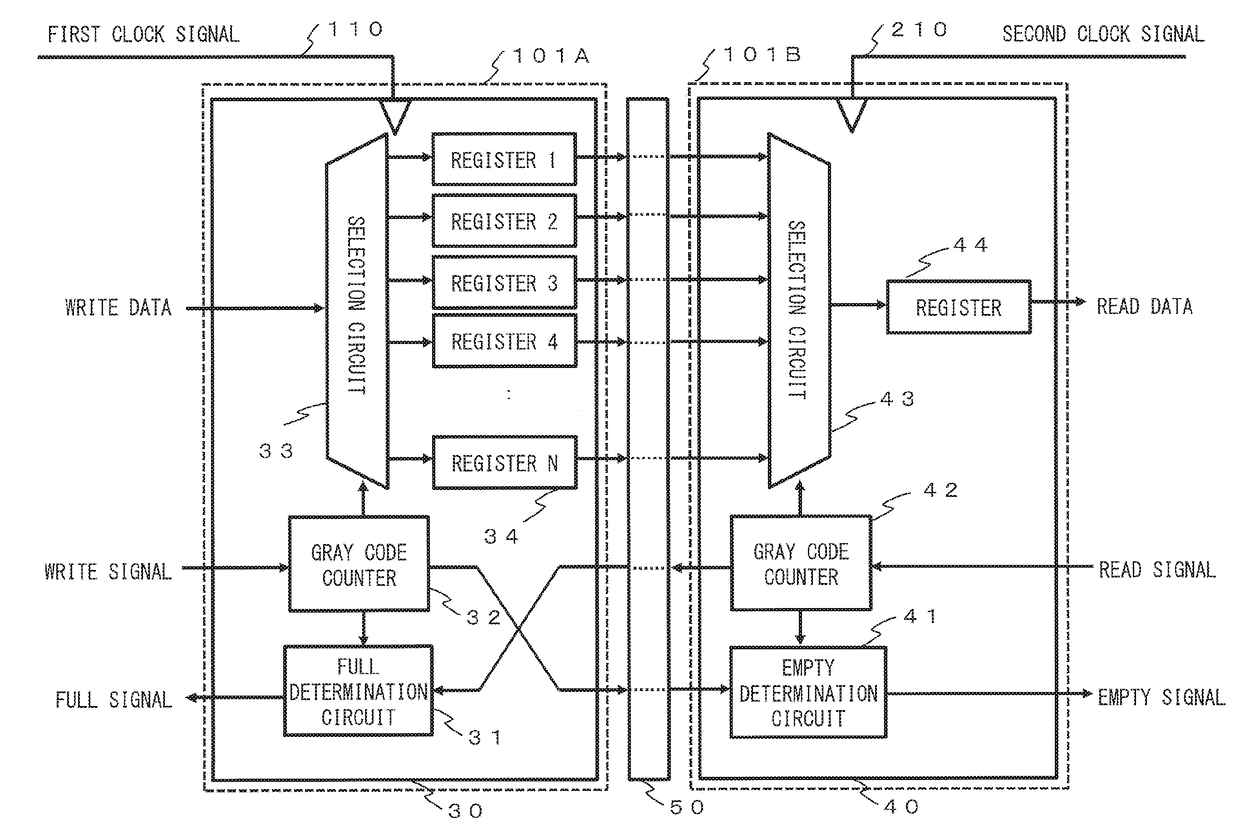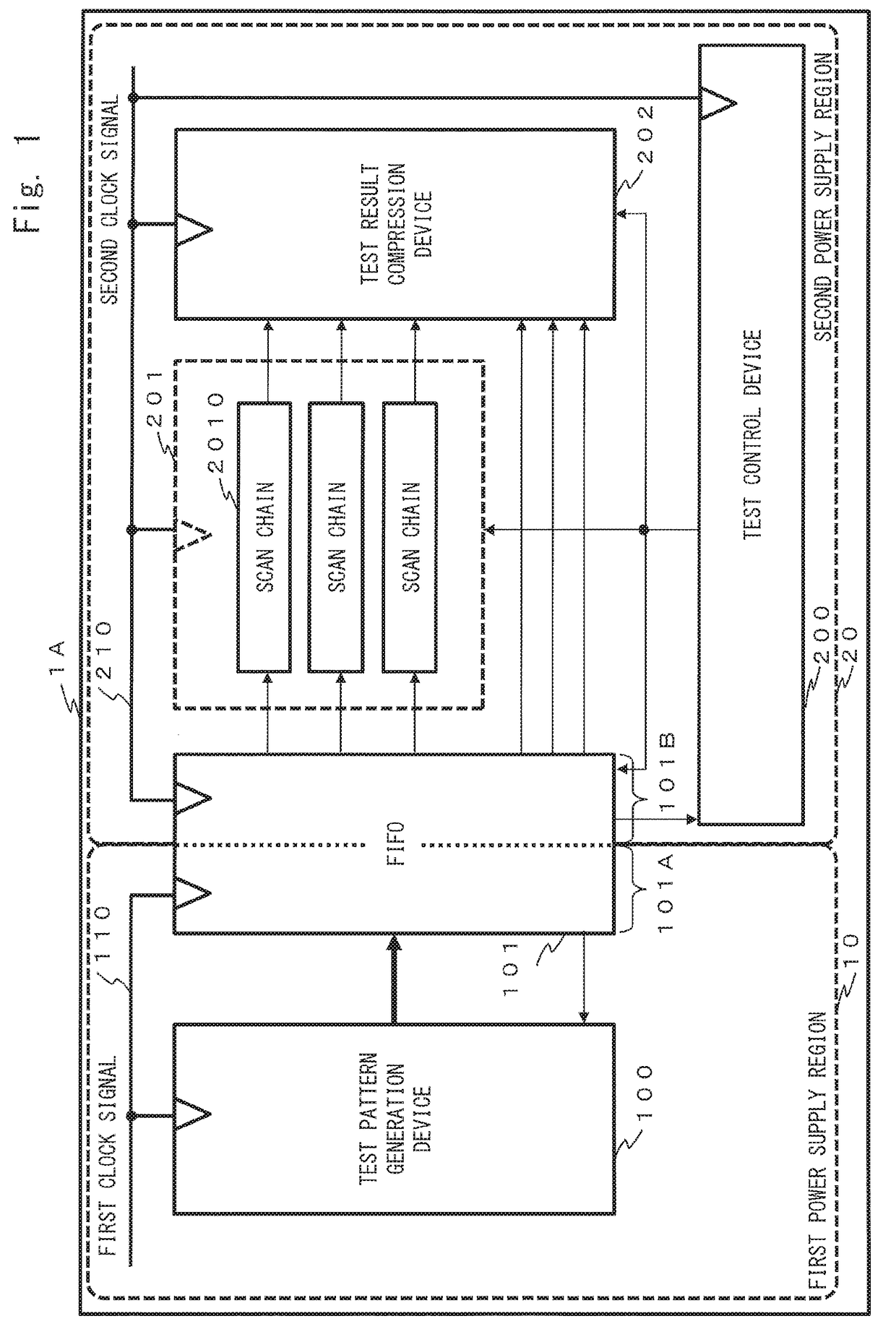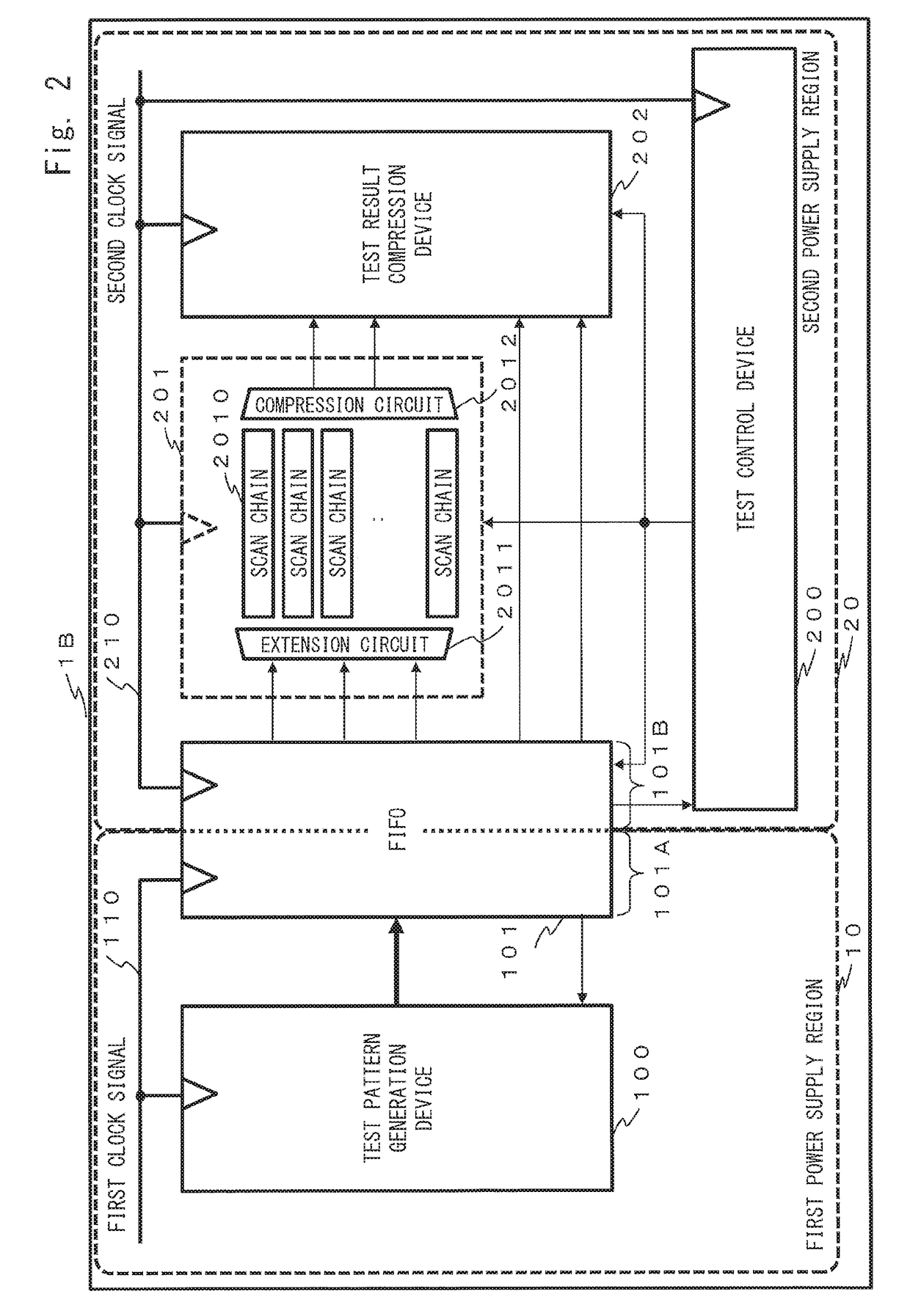Semiconductor device and scan test method
a technology of a semiconductor device and a scan test, which is applied in the direction of measurement devices, error detection/correction, instruments, etc., can solve the problems of inability to take out correct test results stably, inability to supply correct test data, and difficulty in timing design in some cases, so as to reduce the occurrence of timing violations and shorten the execution time
- Summary
- Abstract
- Description
- Claims
- Application Information
AI Technical Summary
Benefits of technology
Problems solved by technology
Method used
Image
Examples
first embodiment
[Overall Configuration]
[0038]The configuration of a semiconductor device (1A) according to the first embodiment is described hereinafter with reference to FIG. 1. FIG. 1 is a block diagram of the semiconductor device (1A) according to the first embodiment.
[0039]As shown in FIG. 1, the semiconductor device (1A) includes a test pattern generation device (100), a FIFO (101), a test control device (200), a circuit to be tested (201), and a test result compression device (202). The semiconductor device (1A) includes a first power supply region (10) and a second power supply region (20), and power supply lines are different between the first power supply region (10) and the second power supply region (20).
[0040]A first power supply region (10) includes the test pattern generation device (100). A second power supply region (20) includes the test control device (200), the circuit to be tested (201), and the test result compression device (202). Some functional block (101A) in the FIFO (101)...
second embodiment
[0131]A second embodiment is described hereinbelow. In the following description of the second embodiment, the same elements as in the first embodiment described above are denoted by the same reference symbols or the like, and the description of the same is omitted as appropriate.
[Overall Configuration]
[0132]The configuration of a semiconductor device (1C) according to the second embodiment is described hereinafter with reference to FIG. 7. FIG. 7 is a schematic diagram of the semiconductor device (1C) according to the second embodiment.
[0133]As shown in FIG. 7, the semiconductor device (1C) according to the second embodiment is different from the semiconductor device (1B) according to the first embodiment in that it further includes a test clock control device (203).
[0134]The test clock control device (203) is included in the second power supply region (20). The second clock signal (210) is input to the test clock control device (203). Thus, the test clock control device (203) is d...
third embodiment
[0164]A third embodiment is described hereinbelow. In the following description of the third embodiment, the same elements as in the second embodiment described above are denoted by the same reference symbols or the like, and the description of the same is omitted as appropriate.
[Overall Configuration]
[0165]The configuration of a semiconductor device (1D) according to the third embodiment is described hereinafter with reference to FIG. 11. FIG. 11 is a schematic diagram of the semiconductor device (1D) according to the third embodiment. The semiconductor device (1D) according to the third embodiment is an embodiment that is suitable for execution of a runtime test with use of a scan test mechanism.
[0166]As shown in FIG. 11, the semiconductor device (1D) according to the third embodiment is different from the semiconductor device (1C) according to the second embodiment in that it includes a test pattern read device (102) instead of the test pattern generation device (100), and furthe...
PUM
 Login to View More
Login to View More Abstract
Description
Claims
Application Information
 Login to View More
Login to View More - R&D
- Intellectual Property
- Life Sciences
- Materials
- Tech Scout
- Unparalleled Data Quality
- Higher Quality Content
- 60% Fewer Hallucinations
Browse by: Latest US Patents, China's latest patents, Technical Efficacy Thesaurus, Application Domain, Technology Topic, Popular Technical Reports.
© 2025 PatSnap. All rights reserved.Legal|Privacy policy|Modern Slavery Act Transparency Statement|Sitemap|About US| Contact US: help@patsnap.com



